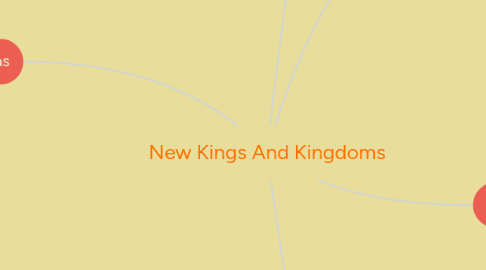
1. The Cholas
1.1. Vijayalaya, who was a Chola from Uraiyur, captured the Kaveri Delta, which belonged to a subordinate of the Pallavas from Kanchipuram, the Muttaraiyar, and built the town Thanjavur, in which he included a temple of Goddess Nishumbasudini. His successors claimed more regions of the subcontinent, including the Pallava and Pandya regions to the north and south, making the empire larger and stronger.
1.2. Rajaraja I, considered to be one of the most powerful Chola rulers, got control over most of these areas and also reorganised the administration of the empire. His son, Rajendra I, developed a navy, using it to raid the Ganga Valley, Sri Lanka, and countries of Southeast Asia.
1.3. The Prominence of the Cholas
1.3.1. The temples built by Rajaraja and Rajendra, are architectural marvels, as well as hubs of social, economic and cultural activities. They, especially, held amazing sculptures of deities and devotees. Chola sculptures are considered to be one of the best in the world.
1.3.2. The Cholas also used several different methods for agriculture and irrigation, like sluice-gates, rainwater tanks, etc.
1.4. The Administration of the Cholas
1.4.1. A Nadu is a group of peasant settlements, called Ur. The village council and Nadu did a lot of administrative work like dispensing justice and collecting taxes.
1.4.2. The rich Vellala caste peasants had considerable control over the affairs of the Nadu under the supervision of the central government of the Cholas.
1.4.3. The kings gave some rich landowners titles like Muvendavelan, Araiyar, etc. They also entrusted them with important offices in the center.
1.4.4. Associations of traders called Nagarams also often perform administrative duties.
1.5. The Categories of Land
1.5.1. VELLANVAGAI: land of non-Brahmana peasant proprietors
1.5.2. BRAHMADEYA: land gifted to Brahmanas
1.5.3. SHALABHOGA: land for the maintenance of a school
1.5.4. DEVADANA, TIRUNAMATTUKKANI: land gifted to temples
1.5.5. PALLICHHANDAM: land donated to Jaina institutions
1.6. Brahmadeya
1.6.1. Brahmanas, as we know, often receive land grants or Brahmadeyas. Each Brahmadeya was looked after by a Sabha (Assembly).
1.6.2. These consisted of important Brahmana landholders. Their decisions were recorded in detail, often on temple walls.
1.6.3. Sabhas had different committees for different jobs. The names of those who are eligible to be members were written on tiny tickets of palm leaves, which were put into earthen pots, and picked out randomly for each committee by a young boy.
1.7. The Rules for Being A Member Of The Sabha Are:
1.7.1. They have to be owners of land from which revenue is collected.
1.7.2. They should have their own homes.
1.7.3. Their age should be between 35 to 70.
1.7.4. They must have Vedic knowledge.
1.7.5. They should be honest and well versed in administrative matters.
1.7.6. If they have been a member of a certain committee for the past three years, then they cannot be a member of another committee.
1.7.7. A person who has not submitted his and his family's accounts, cannot take part in the election.
